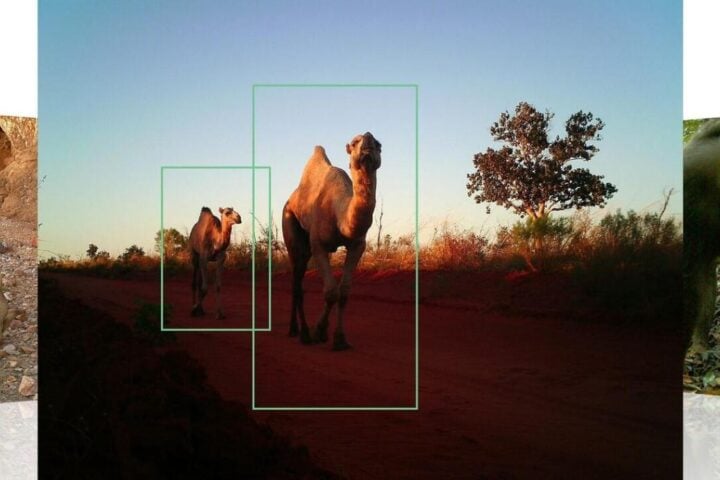Imagine you’re in a doctor’s office, staring at a complex medical scan. To most of us, those swirls of shapes and shades in our MRI and X reports are cryptic messes, but it’s only through these images we can detect tumours, lesions, and any other irregularities needing medical attention. Now, here’s where AI swoops in to save time, reduce errors, and make these complex medical images more comprehensive for doctors.
ScribblePrompt, a tool jointly developed by MIT’s Computer Science and Artificial Intelligence Laboratory (CSAIL), Massachusetts General Hospital (MGH), and Harvard Medical School. At first glance, ScribblePrompt might look like another fancy piece of tech, but its ability to help doctors analyse and annotate medical images faster than ever makes it a potential game-changer in healthcare. But here’s the kicker: it’s designed not to replace doctors but to enhance their capabilities. With the rise of AI tools across industries, medical imaging is no exception—and this one’s worth diving into.
How ScribblePrompt Works: Simplified for All
ScribblePrompt allows users to easily annotate medical images, regardless of their type—whether it’s an MRI, an ultrasound, or even a photograph of skin. Doctors, researchers, or even students can scribble over or click on the region they want to study further, and the tool will segment that area. For instance, a scribble over a kidney in an ultrasound will instantly highlight that structure, saving time and reducing the risk of human error.
According to Hallee Wong, MIT Ph.D. student and lead author, “AI has significant potential in analysing images and other high-dimensional data to help humans do things more productively.”
What’s even cooler is ScribblePrompt’s flexibility. Unlike older models that require extensive pre-training on specific images, ScribblePrompt can handle images it hasn’t seen before. How? Through simulated annotations. The team simulated how users would mark up 54,000 medical images, creating a robust dataset for the AI to learn from. These included scans of eyes, brains, bones, and skin—giving ScribblePrompt a diverse range of medical structures to identify.
Similar Posts
Reducing Annotation Time: Efficiency Meets Accuracy
ScribblePrompt outshines its peers when it comes to speed and accuracy. In fact, it reduced annotation time by 28% compared to Meta’s SAM (Segment Anything Model). This might sound like a tiny figure, but in medical terms, this could translate into quicker diagnoses and faster treatment plans. Time is critical in healthcare, and any delay can significantly affect patient outcomes. Adrian Dalca, an assistant professor at Harvard Medical School, pointed out that segmentation is a prevalent task in biomedical image analysis, which makes speed essential: “ScribblePrompt was carefully designed to be practically useful to clinicians and researchers, and hence to substantially make this step much, much faster.”
If a doctor needs to refine the segmentation, ScribblePrompt allows for easy adjustments by “negative scribbles”—a feature that excludes unwanted regions. For example, if the segmentation overextends into surrounding tissue, a doctor can mark off the excess area with a negative scribble, fine-tuning the result.
User-Friendly Interface: A Doctor’s Best Friend
Doctors who’ve tested ScribblePrompt found its user-friendly interface particularly helpful. A user study involving neuroimaging researchers at MGH showed that 93.8% of them preferred this tool over SAM for scribble corrections, and 87.5% favoured its click-based edits.
Think about it this way: instead of tediously marking up areas across hundreds of scans, a doctor can now handle segmentation in minutes. And let’s not forget, we’re talking about complex structures like veins in eye scans, bones, or even small cellular structures. ScribblePrompt adapts quickly, whether the image is 2D or 3D. Bruce Fischl, a radiologist at MGH, praised the tool’s utility, noting that “The majority of segmentation algorithms that have been developed in image analysis and machine learning are at least to some extent based on our ability to manually annotate images.” In medical imaging, where scans often exist in 3D volumes, this accuracy is key.
Real-World Impact: Ready for Clinical Use
ScribblePrompt isn’t just an academic exercise. It’s already being applied in real-world settings, and its self-correcting abilities make it highly desirable for researchers and clinicians alike. The AI has undergone testing across 12 new datasets that included images the tool had never seen before. The result? It outperformed four existing methods, offering more accurate segmentation predictions.
And it’s getting noticed. ScribblePrompt will be presented at the prestigious European Conference on Computer Vision (ECCV) 2024, and its creators have already bagged awards like the Benchside Paper Award at the Computer Vision and Pattern Recognition Conference (CVPR) earlier this year. The tool’s potential impact in clinical settings has been recognised, and its future applications seem boundless.
Why It Matters to You
Medical technology like ScribblePrompt might sound complex, but its day-to-day implications are tangible. If your doctor can analyse your medical images faster and more accurately, it could mean quicker diagnosis, better treatment options, and improved healthcare outcomes for patients. Plus, the less time your doctor spends staring at screens, the more they can focus on you and your care.
In a world where AI is often viewed with scepticism, ScribblePrompt stands out by focussing on human-AI collaboration rather than replacement. It’s fast, it’s accurate, and it’s designed to help—not hinder—medical professionals. “We wanted to train what’s essentially a foundation model on a lot of diverse data so it would generalize to new types of images and tasks,” Wong stressed.
As AI becomes more integrated into healthcare, tools like ScribblePrompt offer a glimpse into the future—one where machines work hand-in-hand with doctors to improve patient care. By reducing annotation time and offering a flexible, intuitive interface, ScribblePrompt proves that AI’s role in medicine isn’t to dominate but to enhance human expertise.


















